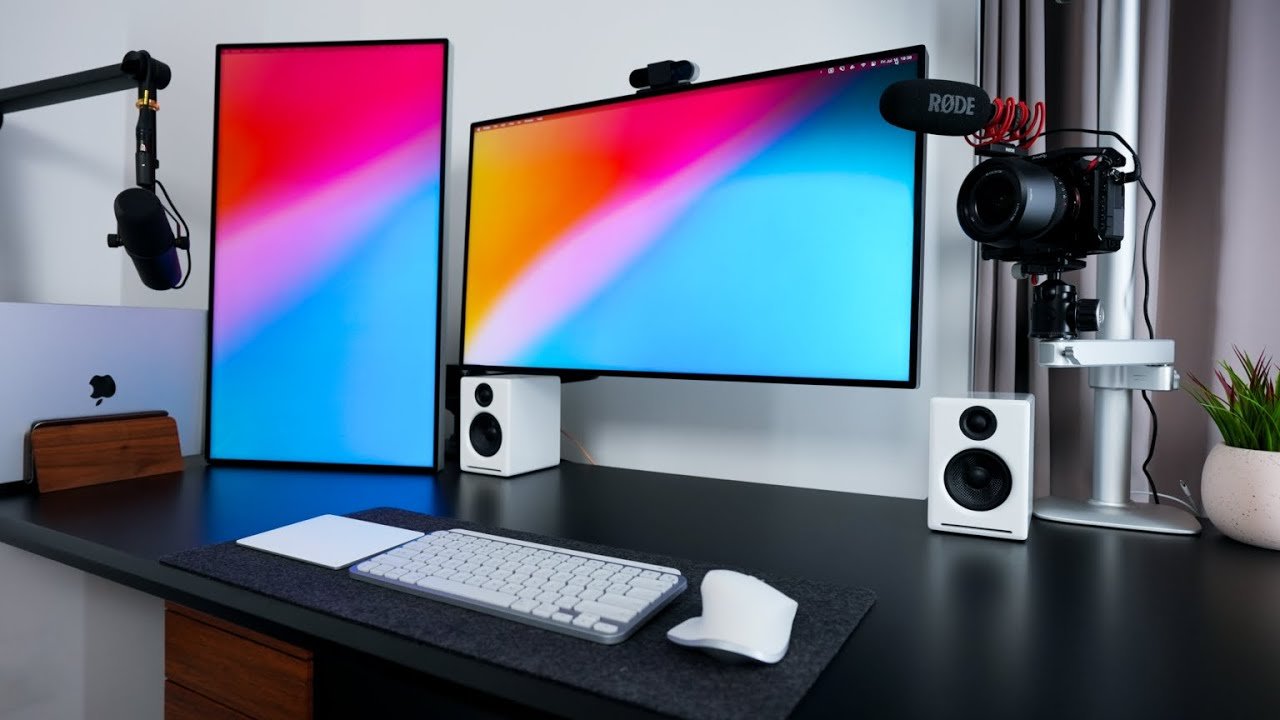Setting up a dual monitor PC can greatly enhance your productivity, gaming experience, and overall computer usage. Whether you’re a professional needing more screen real estate for multitasking, a gamer who wants to enjoy an immersive experience, or someone who just enjoys a more spacious desktop, a dual monitor setup can take your computing to the next level. In this article, we’ll walk you through everything you need to know to set up dual monitors on your PC, from hardware requirements to software configurations.
Why Use Dual Monitors?
Before diving into the setup process, let’s first consider why dual monitors are such a great addition to your workstation. Here are some key benefits of using dual monitors:
- Increased Productivity: Having two screens means you can have multiple applications open simultaneously without constantly switching between windows. This is especially helpful for tasks like coding, writing, designing, and data entry.
- Enhanced Multitasking: Whether you’re comparing documents, browsing the web while working on a presentation, or watching a video while doing research, dual monitors allow you to do it all at once.
- Better Gaming Experience: For gamers, a dual monitor setup allows you to keep an eye on game-related information on one screen, such as chat or guides, while playing on the other.
- Improved Workflow: You can keep your email client, calendar, or communication tools open on one screen, while working on another, minimizing distractions and improving your focus.
Now that we understand why dual monitors are beneficial, let’s walk through the setup process.
1. Check Your Hardware Requirements
Before setting up dual monitors, ensure your PC meets the following hardware requirements:
- Two Display Ports: Your PC needs to have two video output ports. These ports could be HDMI, DisplayPort, DVI, or VGA, depending on your PC’s graphics card. Modern graphics cards often come with multiple HDMI and DisplayPort outputs, but older PCs might require adapters.
- Monitors: You will need two monitors with compatible input ports that match the outputs available on your PC. Ensure both monitors have the same resolution and refresh rate for a consistent experience.
- Graphics Card: Most modern PCs come with a graphics card that supports dual monitors. If you don’t have one, you might need to install a dedicated GPU. Some integrated graphics cards also support dual monitors, but performance can vary.
2. Physically Connect the Monitors
Once you’ve ensured that your PC meets the hardware requirements, the next step is to physically connect your monitors to your PC. Follow these steps:
- Turn Off Your PC: Before connecting the monitors, make sure your PC is turned off to avoid any potential electrical issues.
- Connect the Cables: Use the appropriate cables (HDMI, DisplayPort, DVI, or VGA) to connect each monitor to your PC’s video output ports. Make sure both monitors are powered on and that the cables are securely plugged into both the monitors and the PC.
- Position the Monitors: Arrange your monitors side by side, making sure they’re on a stable surface and within comfortable viewing distance. You can also adjust the height, tilt, and rotation of the monitors if your stands allow for it.
3. Turn On the PC
With the monitors connected, it’s time to power up your PC. Turn it on, and your PC should automatically detect the two monitors.
If the second monitor doesn’t turn on immediately, don’t panic. Sometimes, you need to adjust settings within the operating system to recognize both screens.
4. Configure the Display Settings in Windows
Once your PC is powered up, you can configure the monitors within the Windows operating system. Here’s how you can set up dual monitors on Windows 10 or Windows 11:
- Right-Click on the Desktop: On your desktop, right-click and select “Display Settings” from the context menu.
- Identify the Monitors: Scroll down to the “Multiple displays” section. Click on the “Identify” button, which will display a number on each monitor. This helps you understand which monitor corresponds to which number in the display settings.
- Adjust Display Arrangement: Drag and drop the monitor icons to match the physical arrangement of your monitors. This allows you to control how your mouse moves between the screens. For instance, if you have your left monitor physically to the left, make sure the left monitor is positioned to the left in the display settings.
- Choose Display Mode:
- Extend: This option extends your desktop across both monitors, allowing you to move windows between them. This is the most popular option for productivity and gaming.
- Duplicate: This mirrors the content of one monitor onto the other, ideal for presentations.
- Second screen only: This option turns off your primary monitor and uses only the second monitor.
- Set Resolution and Orientation: You can adjust the resolution of each monitor and configure whether you want them to be in landscape or portrait mode. Make sure the resolution of the monitors matches the native resolution of each screen for optimal display quality.
- Apply the Settings: After making adjustments, click “Apply” to save the changes. Windows will give you a few seconds to review the changes before finalizing them.
5. Configure Display Settings in macOS
If you’re using a Mac, the setup process for dual monitors is slightly different. Follow these steps:
- Connect the Monitors: Physically connect the monitors to your Mac.
- Open Display Preferences: Click on the Apple logo in the top-left corner and select “System Preferences.” Then, click on “Displays.”
- Arrangement Tab: In the “Arrangement” tab, you’ll see both monitors represented by icons. You can drag the icons to arrange them as per your physical monitor setup. Macs will automatically extend the display to both monitors.
- Adjust Resolution and Rotation: In the “Display” tab, you can adjust the resolution and rotate the displays as needed.
- Mirror Displays: If you want to mirror the displays, check the “Mirror Displays” box. Otherwise, the default behavior will be to extend the desktop.
6. Optimize for Gaming and Productivity
Once your dual monitors are set up, consider optimizing the layout for specific tasks:
- For Gaming: You might want to use one monitor for gaming and the other for chat, guides, or browsing. For an immersive gaming experience, consider using one large monitor or two identical monitors with a high refresh rate.
- For Productivity: If you’re using dual monitors for work, arrange the displays so that you can easily drag and drop documents, spreadsheets, or web pages between them. Some people prefer to use one monitor for primary tasks and the other for reference materials or communication tools like email and chat.
- Adjusting for Eye Comfort: Long periods of dual monitor use can strain your eyes. Consider using blue light filter software or physical screen filters to reduce eye fatigue. Additionally, position the monitors at eye level to minimize neck strain.
7. Troubleshooting Tips
If your second monitor isn’t working, here are some troubleshooting tips:
- Check Cable Connections: Ensure that all cables are securely connected to both the PC and the monitor.
- Update Graphics Drivers: Make sure your graphics card drivers are up to date. Outdated drivers can sometimes cause display issues.
- Check Monitor Settings: Some monitors have different input modes (e.g., HDMI 1, HDMI 2, DisplayPort). Make sure the monitor is set to the correct input.
- Restart the PC: Sometimes, a simple restart can resolve recognition issues.
- Check Display Settings: If the monitors aren’t showing up, double-check that your display settings are correctly configured.
Conclusion
Setting up a dual monitor PC can significantly enhance your computing experience by increasing productivity, enhancing multitasking, and providing a more immersive gaming setup. By following the steps outlined above, you can easily connect and configure your dual monitors for maximum performance. Whether you’re a professional or a gamer, a dual monitor setup is a valuable investment for anyone looking to get more out of their computer.



